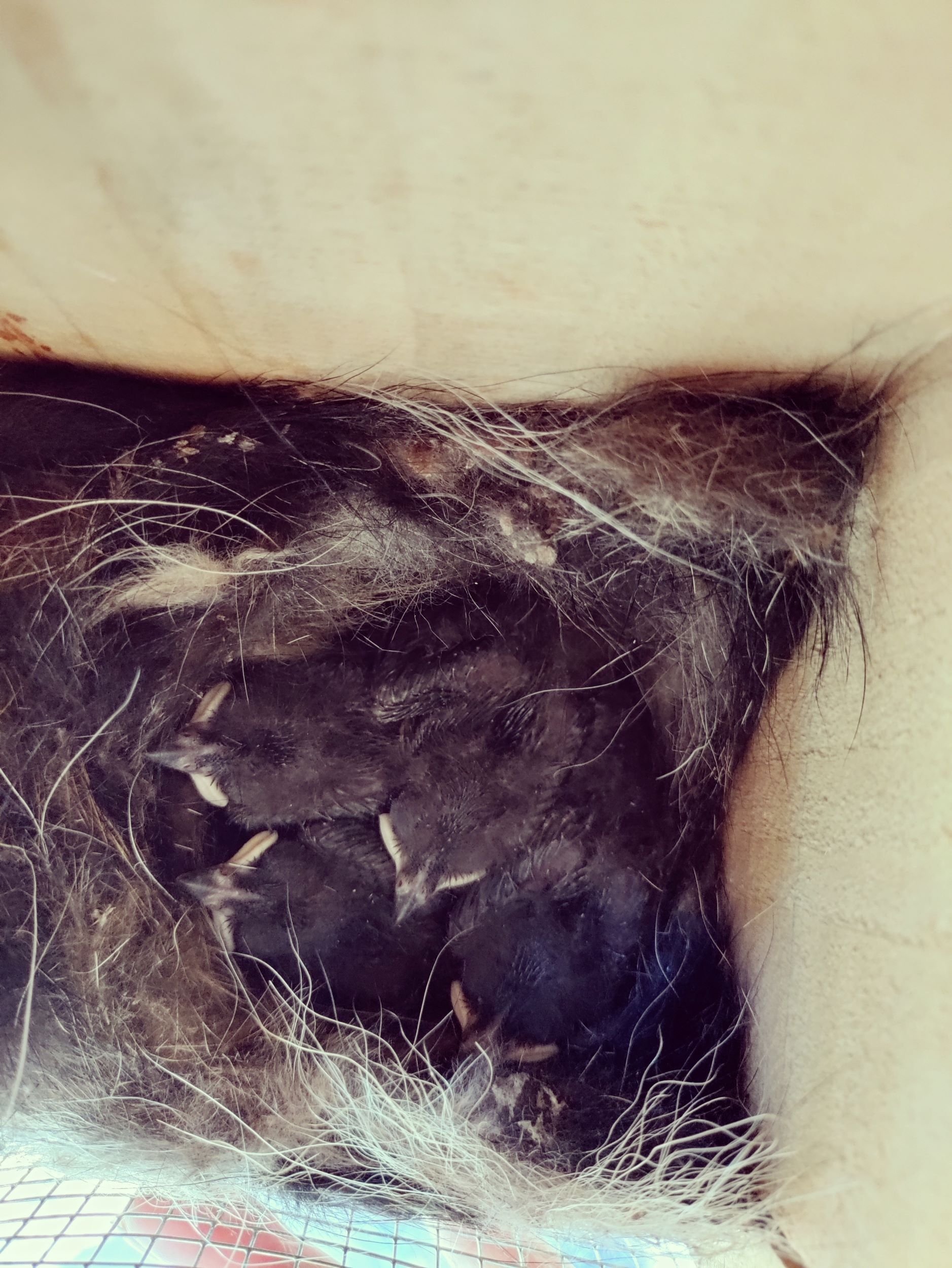http://www.cityofsacramento.org/parksandrec/parks/park-directory/arden-arcade/del-paso-regional-park
At the urging of Tim Vendlinski, long time Del Paso Regional Park (DPRP) advocate, my husband, David Fullerton, and I decided to try Western Bluebird nest box monitoring there. Spring (2022) was fast approaching and knowing nothing, we turned to local Western Bluebird nest monitoring expert, Vicki Butler. She suggested locations and recommended we use hanging boxes. DPRP, sandwiched between I-80 and Auburn Boulevard in north Sacramento, is a City of Sacramento Park. Before we could proceed, City approval was required. We ran the project by the Youths, Parks and Community Enrichment Department (i.e. parks and rec), got approval, registered as park volunteers and signed a waiver.
Hanging Nest Boxes, Image by Daphne Reimer
Next, we built our nest box lifter. A lifter allows the monitor to place/remove the nest box from a tree limb. Our “basket” was a plastic Kirkland Laundry Detergent bucket attached to a telescoping pool pole. Sacramento Audubon Society supplied the bird boxes. The hooks were bendable aluminum strips from Home Depot – another Vicki Butler tip. Not knowing what to expect we decided to start small. We placed 5 boxes in trees dispersed throughout the northeastern half of the park. To attract Western Bluebirds, the boxes needed to have a 1 ¼ inch entry hole, face east, have some shade, and be near open ground with short grass.
We were thrilled to see nesting activity beginning in early April. We’d visit the boxes weekly, tap, tap, tapping on the box to encourage any adult to leave before lowering the box. We’d carefully lift the hatch, peering in to find eggs, hatchlings, nestlings, and fledglings as the weeks went by. Is there anything more precious than a baby bird?! Three out of the 5 boxes were used by Western Bluebirds (one consecutively, making two broods). The box in the least hospitable spot housed an Ash-throated Flycatcher pair. Their nest was lined with goat fur. Ever resourceful, the fur was sourced from the herd used to eat down the grass for fire suppression. In the end, 10 Western Bluebirds and 2 Ash-throated Flycatchers fledged. We removed the boxes in late July with the intention of returning the following spring.
Tim Vendlinski and local biologist, Dan Airola, also had nest boxes at the park. Rather than have multiple people doing the same thing, we took on their boxes and added more of our own for the 2023 season. We’d also changed our lifter from the too-wobbly Kirkland bucket to a hook made out of a bent paint roller arm attached to the telescoping pool pole.
Ash-throated Flycatcher Nestlings, Image by Daphne Reimer
Our nest monitoring expanded from 5 boxes in 2022 to 17 in March 2023: 8 hanging boxes, 5 on posts, and 4 nailed to trees. The nest box locations ran the length of the park. Nesting started in April. Our first surprise was finding a White-breasted Nuthatch using a box. Less exciting was finding the unwelcome House Sparrow occupying 2 boxes. Similar to the previous year, activity ended in early July. Of the 17 boxes, 13 were used -- 1 two times by different species. All in all, 26 Western Bluebirds, 6 White-breasted Nuthatches, 12 Ash-throated Flycatchers, and 13 Oak Titmice fledged.
This was my first experience doing anything remotely scientific. Though nerve-wracking at times (Would we drop the box? Are we upsetting the parent? Would a nestling fall out?), it was deeply gratifying to help birds both tangibly and directly. In our own small way, we were also demonstrating the role DPRP plays in supporting birds. The park, carved up for human activities, also has in its 667 acres, oak woodland, riparian forests, grassland, and Arden Creek wending through the length of it. It’s a vital greenway for resident and migratory birds. eBird shows 115 species have been reported here. We’ve added our results to the eBird database too and next year will begin participating in the California Bluebird Recovery Program.
I have a canvas bag that says “Parks Are For Everyone.” I believe this. Del Paso Regional Park is for the community, the softball athletes, the golfers, and the horse enthusiasts. But it’s also for the birds and other creatures that live there -- not to mention all the native plants. Birders know these are not opposing ideas. I hope, with our efforts, we can convince others to feel the same.
-Daphne Reimer, Sacramento Audubon Society Member and Volunteer



